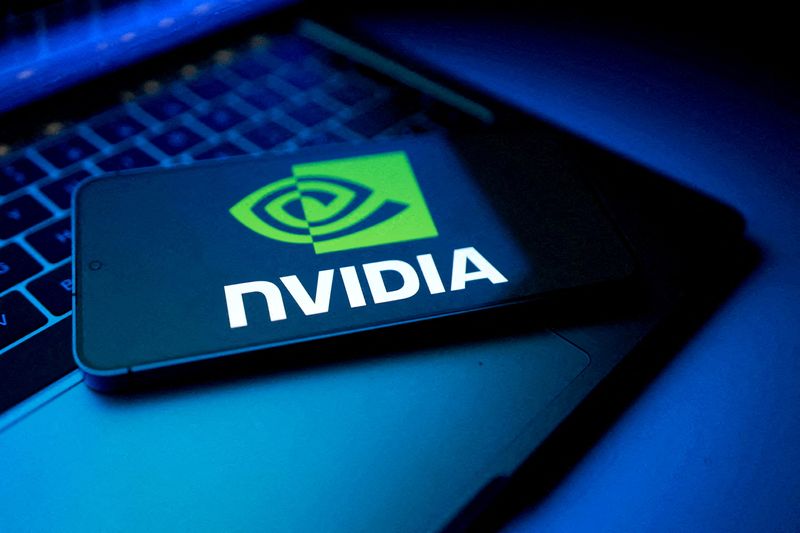Nvidia chip shift to smartphone-style memory to double server-memory prices by end-2026
By Eduardo Baptista
BEIJING (Reuters) –Nvidia‘s move to use smartphone-style memory chips in its artificial intelligence servers could cause server-memory prices to double by late 2026, according to a report published on Wednesday by Counterpoint Research.
In the past two months, electronics supply chains around the world have been hit by a shortage of legacy memory chips as manufacturers turned their focus to high-end memory chips suited to semiconductors designed for AI applications.
But Counterpoint, a technology-focused market research firm, said there is a new problem on the horizon. Nvidia recently decided to reduce AI server power costs by changing the kind of memory chip it uses to LPDDR, a type of low-power memory chip normally found in phones and tablets, from DDR5, which are typically used in servers.
Nvidia is scheduled to release its earnings report later on Wednesday.
Because each AI server needs more memory chips than a handset, the change is expected to create sudden demand that the industry is not equipped to handle, according to Counterpoint.
Memory suppliers like Samsung Electronics, SK Hynix and Micron are already facing shortages of older dynamic random-access memory products after reducing production to focus on high-bandwidth memory, which is necessary to make the advanced accelerators that power the global AI boom.
Counterpoint said tightness at the low end of the market is at risk of spreading upward as chipmakers weigh whether to divert more factory capacity to LPDDR to meet Nvidia’s needs.
“The bigger risk on the horizon is with advanced memory, as Nvidia’s recent pivot to LPDDR means they’re a customer on the scale of a major smartphone maker – a seismic shift for the supply chain which can’t easily absorb this scale of demand,” Counterpoint said.
The firm said it expected prices for server-memory chips to double by the end of 2026.
Higher server-memory prices would raise costs for cloud providers and AI developers, potentially adding pressure to data-centre budgets that are already stretched by record spending on graphics processing units and power upgrades.
(Reporting by Eduardo Baptista; Editing by Thomas Derpinghaus)



Leave a Comment
Your email address will not be published. Required fields are marked *